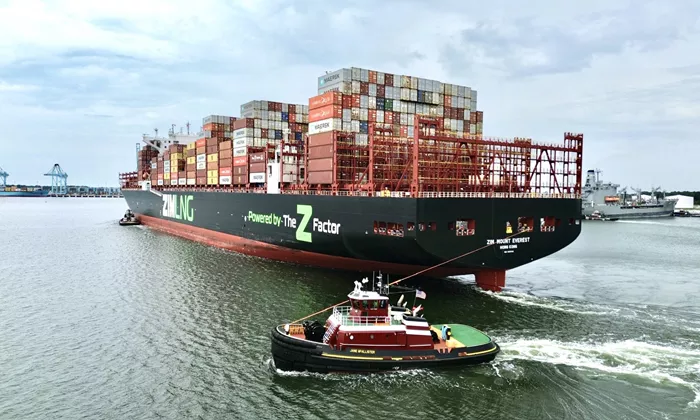ZIM Integrated Shipping Services Ltd. (NYSE: ZIM) announced strong financial results for the first quarter ended March 31, 2025, demonstrating significant growth despite ongoing global trade uncertainties.
The company reported revenues of $2.01 billion, marking a 28% increase year-over-year, driven by higher freight rates and increased cargo volumes.
Earnings per share (EPS) soared 226% to $2.45, substantially exceeding analyst expectations of $1.87 per share. Net income reached $296 million, up from $92 million in the same period last year, reflecting improved operational efficiency and cost management.
Operationally, ZIM handled 944,000 TEUs in Q1 2025, a 12% increase compared to Q1 2024, with an average freight rate per TEU rising 22% to $1,776.
Adjusted EBITDA rose 82% year-over-year to $779 million, while adjusted EBIT increased to $463 million from $167 million in Q1 2024, representing margins of 39% and 23%, respectively.
CEO Eli Glickman emphasized the company’s strategic agility in managing capacity and cargo flow, particularly from China and Southeast Asia to the U.S., despite the “heightened level of uncertainty” in the global trade environment.
He reaffirmed ZIM’s 2025 guidance with adjusted EBITDA expected between $1.6 billion and $2.2 billion and adjusted EBIT between $350 million and $950 million.
ZIM’s balance sheet strengthened with a net leverage ratio improving to 0.6x from 0.8x at year-end 2024, and net debt decreasing to $2.49 billion. The company also declared a dividend of $0.74 per share, totaling approximately $89 million, reflecting its commitment to shareholder returns.
Following the earnings release, ZIM’s shares rose 5.7% to $19.38, recovering from earlier lows but remaining below the 200-day moving average. The stock holds a strong Composite Rating of 91 out of 99, with a Relative Strength Rating of 92 and an EPS Rating of 81, signaling robust market performance metrics.
The recent reduction in U.S. tariffs on Chinese imports has contributed to a partial revival in shipping volumes, benefiting ZIM and other transportation stocks, although the sector overall remains challenged in 2025.
Learn more:


